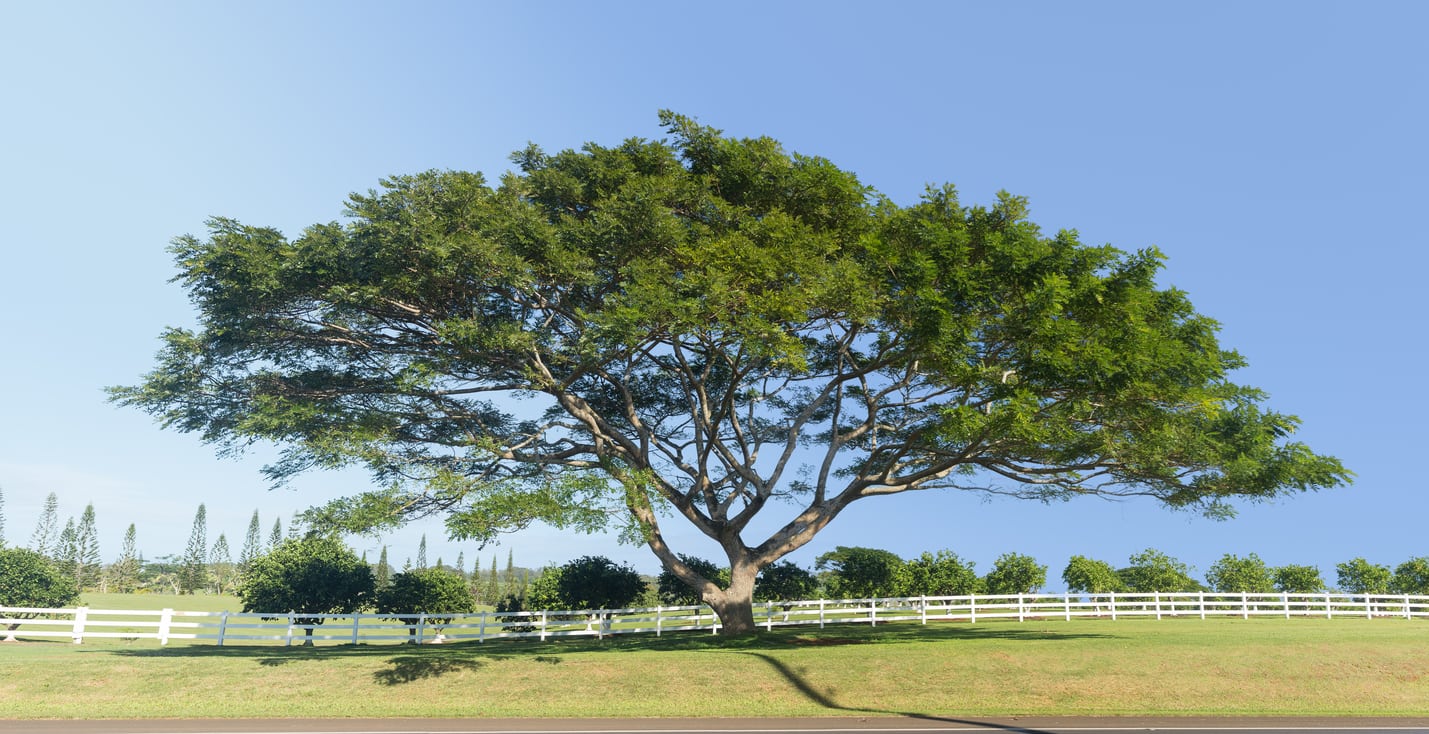Acacia Koa Information And Care: Where Do Acacia Koa Trees Grow


Growing a koa tree should only be attempted where the conditions are right, namely those of Hawaii, its native area. These are beautiful shade trees that do best in their natural habitat but which can be grown to a shorter lifespan and smaller size in Hawaii’s residential areas.
Acacia Koa Information
Where do Acacia koa trees grow? Acacia koa is native to Hawaii and is found growing naturally on most of the islands. It is also the largest native tree in the state. The wood of the tree is prized for furniture and crafts, but it is hard to come by and is mostly used from remnants or harvested in pasture areas. These trees grow naturally in the upland forests of Hawaii, and when grown in yards and gardens are prized for shade and screening. In its natural setting, an Acacia koa tree can grow to over 100 feet (30 m.) tall. In landscaping settings, they generally stay much smaller, closer to 20 to 30 feet (6-9 m.) and may only live 5 to 20 years. Koa trees produce a nice, umbrella-like canopy that can be up to 40 feet (12 m.) across. They grow best at elevations of 2,000 feet (610 m.) and higher, which is one reason they don’t live as long lower down in residential settings.
How to Grow Koa Acacia
Although they don’t grow as well at lower elevations and in urban and residential neighborhoods, growing a koa tree in the landscape is popular. They grow quickly, up to five feet (1.5 m.) per year, but won’t last more than a couple decades. They are prized for that quick growth and for adding rapid shade and screening in yards. The trees may grow bushy and shorter or taller and straighter, so when looking for one at a nursery, describe the style of tree growth you prefer. Essential to Acacia koa care is protecting the tree. They are susceptible to damage from lawn mowers and weed whackers and one small cut can cause rot to set in and often ends up killing a tree. Keep a wide ring of mulch around koa trees to protect them from physical damage. If growing in Hawaii, the conditions should be right for minimal care. Water the tree until it is established, but then regular rainfall should be adequate. Make sure that the soil drains well.
Sign up for the Gardening Know How newsletter today and receive a free copy of our e-book "How to Grow Delicious Tomatoes".

Mary Ellen Ellis has been gardening for over 20 years. With degrees in Chemistry and Biology, Mary Ellen's specialties are flowers, native plants, and herbs.